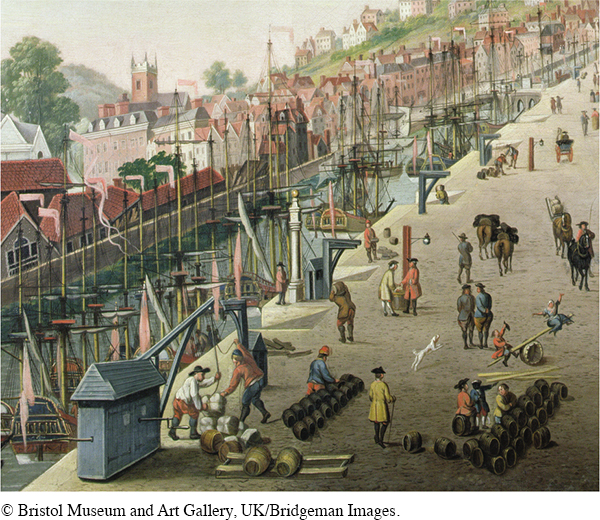The American Promise: Printed Page 62
The American Promise, Value Edition: Printed Page 58
The American Promise: A Concise History: Printed Page 68
The Rigors of Servitude
The American Promise: Printed Page 62
The American Promise, Value Edition: Printed Page 58
The American Promise: A Concise History: Printed Page 68
Page 62Servants—

Servant life was harsh by the standards of seventeenth-
“The Servants of this Province,” one boasted, “live more like Freemen than the most Mechanick Apprentices in London, wanting for nothing that is convenient and necessary, and . . . are extraordinary well used and respected.” For many other servants, such promises withered when confronted by the rigors of labor in tobacco fields. Severe laws aimed to keep servants in their proper places. James Revel, an eighteen-
The American Promise: Printed Page 62
The American Promise, Value Edition: Printed Page 58
The American Promise: A Concise History: Printed Page 68
Page 63Women servants were subject to special restrictions and risks. They were prohibited from marrying until their servitude had expired. A servant woman, the law assumed, could not serve two masters at the same time: one who owned her indentured labor and another who was her husband. As a rule, if a woman servant gave birth to a child, she had to serve two extra years and pay a fine. Inevitably, the predominance of men in the colonial population pressured servant women to engage in sexual relations, and about a third of immigrant women were pregnant when they married.
Harsh punishments reflected four fundamental realities of the servant labor system. First, planters’ hunger for labor caused them to demand as much labor as they could get from their servants. Second, servants hoped to survive their servitude and use their freedom to obtain land and start a family. Third, since servants saw themselves as free people in a temporary status of servitude, they often made grudging, halfhearted workers. Finally, planters put up with this contentious arrangement because the alternatives were less desirable.
Planters could not easily hire free men and women because land was readily available and free people preferred to work for themselves on their own land. Nor could planters depend on much labor from family members because families were few, were started late, and thus had few children. And, until the 1680s and 1690s, slaves were expensive and hard to come by. Before then, masters who wanted to grow more tobacco had few alternatives to buying indentured servants. (See “Analyzing Historical Evidence: Enslavement by Marriage.”)